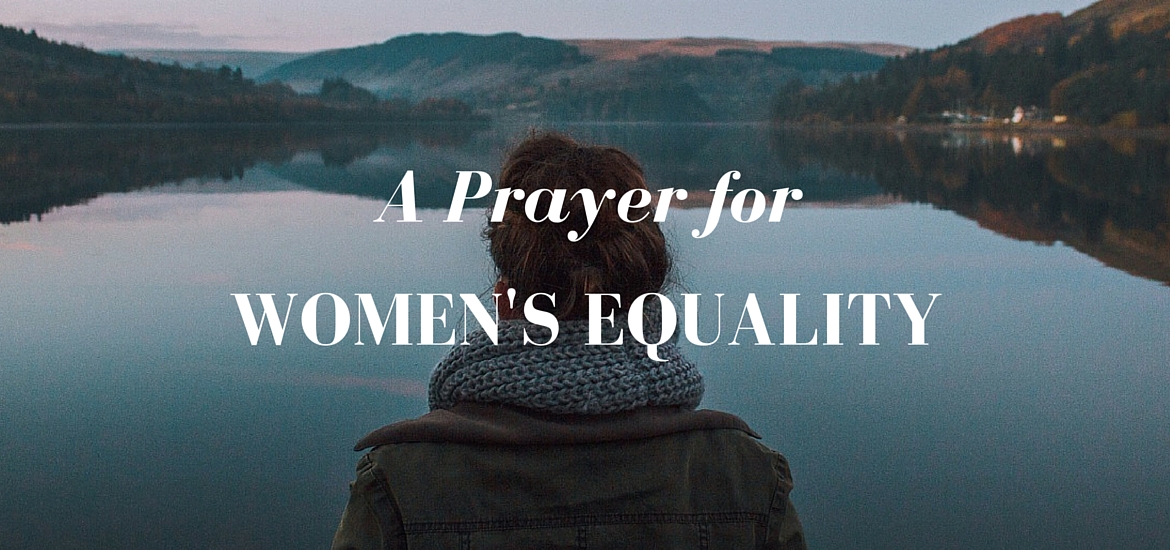Pop star Lady Gaga is more than an entertainer, she is a prophetic voice. Through fashion and performance art, she functions as prophet for secular USAmerica.
Israel had many prophets, but today the church isn’t adding anyone’s words to the Biblical canon. When did we begin to refuse to see the prophets in our midst?
Prophets Seek Justice
The primary role of a prophet is to work for justice. Prophets actively stand outside of society in order to critique the injustices within society, with the hope of bringing about change and reconciliation. The prophet simultaneously exposes the present reality while developing a vision for the future.
Prophets have traditionally used a variety of tools, including, as Dan Allender writes, “piercing narrative, powerful images, prescient poetry” and a willingness to “bear the consequence of being viewed as an enemy of the status quo.” The prophet employs such artistry and suffering to create a compelling vision of what reality could be if justice were enacted, if love and mercy were lived.
Reconciliation & the LGBTQ Community
Perhaps most notable is Lady Gaga’s prophetic work against injustice against the LGBTQ community. She came out as bisexual to both acceptance and criticism from the queer community: she was accused of not being “gay enough” to claim bisexuality nor to be a representative voice. Regardless of the level of her bisexuality, claiming it to a national audience was a prophetic move: Gaga chose to align herself with the marginalized in a hetero-normative culture. As many prophets before her, she actively stood outside of the cultural norm in order to engage and critique culture’s treatment of a marginalized people.
Lady Gaga worked for reconciliation between LGBTQ and heterosexual persons, who often have been viewed as oppositional. “Born This Way,” was became an anthem for the community. It was significant for its overt shout-out to the LGBTQ community; equally significant is that she included heterosexuals:
“No matter gay, straight, or bi,
lesbian, transgendered life,
I’m on the right track, baby,
I was born to survive.”
These lyrics were an effort to highlight LGBTQ rights, but they were also a way to unite LGBTQ and heterosexual communities. Live performances of the piece end with Gaga and her dance company bending towards one another in a circular, all-embracing hug (see title image). The performance offers an image that speaks to a vision of what our reality could be, one in which gay individuals are not only equal, but lovingly included. Her image calls us toward the possible reality in which we are one, united humanity that includes multiple sexualities and sexual orientations.
Prophets must bear the consequence of provoking controversy and disrupting the status quo. As a result of Lady Gaga’s involvement with the LGBTQ community, rumors circulated in an attempt to shame her. One of the most direct attacks on her sexual identity was the rumor that she has a penis. Rather than retaliating (and effectively proving that she would be ashamed to be part of the transgendered community), Gaga claims to love the rumor. She stated: “‘This has been the greatest accomplishment of my life: to get young people to throw away what society has taught them is wrong.’” If fans believe her to be transgendered and still come to her performances, listen to her music, and support her work, Gaga takes it as a hopeful sign for future inclusion of transgendered individuals in society. Rather than suffer, Gaga reframes the consequence into a cause for celebration.
Another consequence has been the protestors who gather outside of Monster Balls, Lady Gaga’s stadium concerts. One writer recalled a concert in Nashville in which picketers held signs “urging ‘homosexuals’ and other ‘sinners’ to ‘repent’.” During the show, Gaga shouted from stage, “Jesus loves every fucking one of you!” before launching into a raucous performance, “as if to say, the only proper theological response to bigotry and hatred is to dance in its face.” Prophet Gaga practices a living theology; rather than discussing abstractions, she moves into actions.

Reconciliation between the Sexes
In realm of sex, Gaga prophetically exposed the present reality by reflecting back to her audience what the present really looks like, and the reflection is startling. One of the most notable examples is the ‘meat dress’, which Gaga wore at the 2010 MTV Video Music Awards. Feminist Kate Durbin notes that “masculinists see but a piece of meat, so Gaga gives them exactly what they ‘see’ – a piece of meat. In order, of course, that the Male Gaze might ‘see’ itself.” The powerful fashion image of a woman wearing raw beef exposed the hardness of the heart of USAmerican society.
Some of her other fashion pieces have been similarly tied to society’s treatment of women. Lady Gaga has worn many weapon-inspired bras — a flame-thrower bra in the “Bad Romance” video; a gun bra in the “Alejandro” video; a fire bra on the cover of GQ magazine. Durbin states that, like many women, Gaga’s “breasts were seen as a weapon, therefore she was going to literally turn them into that.” Gaga hears the narrative society tells women and exposes the flaws and pain in the narrative through constructing a powerful fashion image.

Another statement on sex and gender was the introduction of Gaga’s alter-ego, Jo Calderone, at the 2011 MTV Video Music Awards. The opening monologue made it clear that this performer was not Lady Gaga as Jo Calderone: “Gaga? Yeah, her,” Jo says while pointing to some vague distance; Gaga is not here. To further emphasize the opposition between Gaga and Jo, he informs the audience, “She [Gaga] left me [Jo].” Gaga, according to Jo, groups him in with other men: “She said I’m just like the last one.” Jo, for his part, dances in a company comprised entirely of men; the audience does not see a single woman on stage during the performance.
Gaga here uses her one body to portray a woman and a man who are in opposition to one another. Similarly, the viewers are one humanity in opposition to one another as a result of the gender divide. The audience knows it to be absurd for Gaga to critique Jo, just as it is equally absurd for Jo to feel left out from Gaga’s life, since they are one and the same. The audience can then look back on themselves and see that they create divides within the one humanity, divides where there should be unity. Gaga-versus-Jo is a picture of humanity, a mirror for how we relate across the sexes.

Prophets Expose Idolatry
An additional role of the prophet is to expose idolatry. James Danaher wrote that in USAmerican culture “what we recognize and revere about a person is their celebrity status.” Celebrity is the new idolatry. Most of us join the game, attempting to construct an identity using various social media to gain some amount of fame. At the same time, we hate celebrities for their status and for having the resources to continually re-create their identities, so eventually we demand their destruction.
Gaga undermined the system of celebrity to show that it leads to death and destruction. In her performance of “Paparazzi” at the 2009 MTV Video Music Awards, Gaga opens by naming the idol USAmericans have come to worship, and recognizes her potential position as sacrifice: “I pray the fame won’t take my life.” The fame is the god that this society has made, and it demands ritual sacrifice. By the end of the show, Gaga is covered in blood and hanging from a rope, enacting her own death.
By walking, willingly, to her own enacted death, she showed the audience what we do to celebrities: we demand violent destruction. The image does what prophetic images are meant to do: disrupt denial and expose idolatry of the heart.
Having shown the audience her destruction, Gaga is then free of the audience’s demands on identity because she has fulfilled that identity and shown that it leads to death. After that moment, all her work is free to be performed without inhibition because it is enacted in the shadow of her own death. The audience are no longer able to impose an identity on her; it is she who identifies herself with true identity/ies.
What The Church Can Learn
Lady Gaga’s work as a prophet within the secular community questions and critiques the church, inviting its members to recognize good news with fresh sight and to return to worship. Gaga, in acting as a secular prophet, aligns herself with the marginalized people of the LGBTQ community. The church should be convicted: we are called to stand with the oppressed and marginalized, and instead are the ones excluding and condemning. As Gaga reconciles and unifies queer and straight peoples, the church creates divides with hateful language on picket signs. Gaga’s work asks the church: what is a loving response to individuals, regardless of sexual orientation? Her scream of Jesus’s love followed by dance questions: what would action look like on your part? Can you ever stop the debates over scripture long enough to act?
Gaga’s use of fashion and performance art raise questions of communication. Gaga confronts the culture through symbols that it fluently understands: music, performance, and fashion. The church insists on using scripture and sermons as its primary forms of engagement, but for many people in USAmerica, the text does not carry authority over their lives. How could the church better engage culture on its own terms? What would happen if we ceased to articulate and defend every position, and made room for a conversation through image and action that made sense to today’s culture, within and outside of the church?
Finally, Gaga’s enacted death that exposed the idolatry of celebrity questions the way the church teaches the narrative of Jesus crucified. We often have sermons trying to explain what Jesus did, but her bloody performance and empty stare ask: how would the church enact the narrative? Pastors try to educate congregants by explaining the historical context of the cross, but what if they moved the narrative into the context of today’s culture? What would we critique? What idols would we expose?
The prophet known as Lady Gaga is doing God’s work in USAmerica. Rather than fight her, the church would be wise to allow itself to be critiqued by her exposures and educated by her forms of communication. After all, God has often provided prophets who have worked outside the church to invite the church itself to repentance; we should not be surprised that the Living God is still speaking, should not be startled to see a prophet in our midst. The proper response might be gratitude and worship: perhaps a dance would be appropriate.
This piece was one of my first that developed theology from culture. Who do you see as currently working as a prophet in the world? How would you like to see the church perform the Christian narrative?


![The Prophetic Works of Lady Gaga - [from Literate Theology]](https://kateraedavis.com/wp-content/uploads/2016/01/prophet-gaga-1.jpg)






